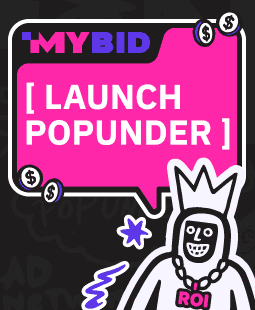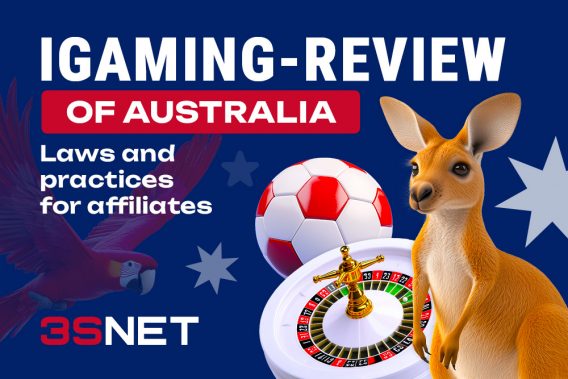
Last Updated: 29 november 2025
Estonia is a fascinating country for media buyers specializing in gambling and betting verticals. It features a legalized iGaming market (online casinos and sports betting), clear licensing and taxation systems, and an active audience engaged in playing and betting. Competition here is less fierce compared to Germany or the UK, while internet and smartphone penetration ranks among the highest in Europe. A new overview on 3S.INFO delves into all aspects of promoting in Estonia: laws and legitimate brands, target audience peculiarities, and traffic acquisition techniques.
This content serves informational purposes only. We do not endorse violations of local laws or service policies. Please familiarize yourself with local regulations and comply accordingly!
Why Is Estonia a Trending iGaming Market?
- Member of the EU, adhering to transparent European regulations.
- High level of digitalization — nearly 90% of residents use the internet daily.
- Loyal audience: Estonians are accustomed to gambling in a legal environment.
- Open market for international brands, though local operators maintain strong positions.
- No language barrier for part of the audience: many speak Russian and English fluently.
For media buyers, this means a stable GEO where they can drive traffic to casino and bookmaker offers with predictable results.
Pros and Cons of Estonia’s iGaming Market
| Pros | Cons |
| Clear regulation and transparent laws | Small population (1.35 million) |
| Population accustomed to licensed operators | Intense competition among brands |
| Trust in licensed casinos and bookmakers | Strict advertising rules: TV and outdoor limitations |
| Accessibility of international brands | Expensive license for new entrants |
| Affluent and digitally savvy audience | Market oversaturated with slot offers |
Legal Betting and Gambling in Estonia: Legislation and Regulation
In Estonia, gambling is regulated by the Gambling Act (Hasartmänguseadus), adopted in 2008 and implemented since January 2009. Since then, the law has been updated several times, but its foundation remains the permitting of both offline and online gambling.
The regulatory authority is the Estonian Tax and Customs Board (Maksu-ja Tolliamet, MTA). It oversees licensing, monitoring, maintains lists of authorized and prohibited websites and collects taxes.
How to Obtain an Estonian Gambling License?
Licenses are issued by Maksu-ja Tolliamet.
There are two types of licenses:
- Activity Licence: Permission to organize a particular type of gambling activity (casino, betting, lotteries).
- Operating Permit: Operational permission for a specific website or location.
Conditions for obtaining a license:
- Legal entity must be registered in Estonia or the EU.
- Minimum share capital ranges from €1 million (for casinos) to €130 thousand (for sports betting and sweepstakes).
- Owners and management undergo reputation checks.
License Costs:
- Application fee: From €47,900 (for online casinos) and from €31,950 (for bookmaking).
- The license is perpetual, but renewal inspections occur every five years.
Which iGaming Brands (Gambling and Betting) Are Popular in Estonia?
More than 20 companies hold active gambling licenses in Estonia. The regulation here is quite flexible and appealing for businesses due to relatively low taxes and support for cryptocurrencies. This makes Estonia a popular hub for online casinos and gambling operators targeting international markets.
The official registry of licensed iGaming operators (online casinos and bookmakers) in Estonia can be found in a dedicated section on the regulator’s website.
According to the analytical service Blask (September 2025), the top 5 most popular casino and bookmaker brands in Estonia include:
- Bet365;
- Nutz;
- Stake;
- Fairspin;
- GoldenStar.
In November 2025, Estonia approved a plan to gradually reduce the tax on online gambling revenue. The rate will eventually be lowered from the current 6% to 4%. The stated goal of the authorities is not only to attract more international operators to the country but also to potentially increase the volume of funds directed towards supporting cultural and sports initiatives.
- The reduction will not be implemented all at once. The government intends to do this in stages, cutting the rate by 0.5% at a time. Each subsequent step will only be possible after reaching a specific annual threshold for tax revenues, initially set at 27 million euros. It is projected that this policy will increase the budget’s total revenues from the industry to 30 million euros by 2028, primarily through the entry of new companies. At the same time, oversight of compliance with the law remains strict and stays with the Financial Intelligence Unit (FIU).
- Supporters of the reform are convinced that the lower tax burden will make the Estonian license significantly more attractive to global players. This, in turn, will expand the market and, in the long term, increase the overall volume of taxes collected, which, as before, will be used to fund culture and sports.
- Estonia is consciously taking a risk, sacrificing short-term budget stability for the ambitious goal of becoming one of the key licensing hubs in Northern Europe. The success of this strategy will depend on whether the tax maneuver can truly stimulate sustainable market growth or if it will simply redistribute existing operators without delivering the expected economic effect.
Players’ winnings from licensed operators are subject to a tax rate of 0%.
State revenues from the gambling industry continue to grow: in 2024, Estonia collected approximately €57 million in gambling taxes, doubling the tax receipts from the market since 2020.
Illegal websites are blocked upon decision by MTA: domains offering gambling services without a license end up on the blacklist. The list of gambling websites blocked in Estonia is published on the regulator’s website.
Penalties for illegal activities may reach up to €32,000 for companies and up to 3 years imprisonment for individuals.
iGaming in Estonia: Market and Target Audience
Estonia is a country in Northern Europe, member of the EU and eurozone.
- Population: Approximately 1.35 million (2024).
- Major Cities: Tallinn (450,000), Tartu (100,000), Narva (55,000).
- Official Language: Estonian.
- Approximately 30% of the population speaks Russian, and over 50% are fluent in English.
- Official Currency: Euro (€).
- Internet Penetration: 90% of the population. Smartphones owned by over 85% of residents.
Interesting Facts About Estonia’s Market: History and Development
The history of gambling in Estonia is truly unique and closely intertwined with the overall history of the country. It is a journey from medieval taverns to one of the world’s most advanced and regulated online markets.
Features of Estonia’s iGaming Audience: Who Plays?
Statistics show that up to 84% of Estonia’s population engages in gambling, with around 40% participating online and 58% visiting offline halls and casinos. Slot machines and lotteries occupy a significant portion of the market, while the popularity of sports betting continues to rise.
Based on data from regulators and research studies:
- Around 70% of adults have tried gambling at least once.
- Active audience falls within the age bracket of 25–44 years old.
- Men gamble more frequently than women (65% vs. 45%).
- Income levels are medium to upper-middle class.
Casino favorites include slot games such as Book of Ra, Starburst, Gonzo’s Quest, Sweet Bonanza.
Popular sports for betting include:
- Football (local Meistriliiga, Champions League, English Premier League);
- Basketball (EuroLeague, NBA);
- Ice Hockey (KHL, NHL);
- Esports (CS:GO, Dota 2, FIFA) — growing interest among youth.
What Payment Solutions Matter for Casino and Bookmaker Websites in Estonia?
Methods functioning for deposits and withdrawals in Estonia include:
- International: Visa, Mastercard, Skrill, Neteller, PayPal;
- Local: Swedbank, SEB, LHV;
- Mobile payments: MobilePay, Siirto;
- Cryptocurrencies (BTC, ETH) accepted by some operators.
Estonians are accustomed to fast payments and withdrawals, hence supporting SEPA transfers and local banks is essential.
Affiliate Marketing in Estonia: Traffic, Tips, Checklist
Why Can You Make Money on Traffic from Estonia?
- Affluent audience;
- Lower competition compared to the EU’s “top 5” markets;
- High CPA and RevShare rates (CPA from €100, RevShare 35–45%).
Channels Suitable for Promoting Gambling and Betting in Estonia:
- Social networks (Facebook*, Instagram*, TikTok);
- Streamers on Twitch and YouTube;
- Local sports portals;
- SEO and content marketing.
*Social networks Facebook and Instagram are blocked in Russia by court order.
Top Influencers:
- Estonian Twitch streamers for CS:GO;
- YouTube channels covering betting and predictions.
SEO Hacks for iGaming Promotion in Estonia:
- Create bilingual content (Estonian + Russian/English);
- Write reviews of local operators;
- Use local keywords (“online kasiino,” “spordiennustus”).
Checklist for Launching a SEO Site in Estonia:
- Register a .ee domain.
- Implement multilingual content (Estonian, Russian, English).
- Publish reviews of local brands (OlyBet, Betsafe, Optibet).
- Include content about popular sports and esports.
- Highlight local payment methods in reviews.
- Sell traffic through CPA and RevShare offers.
Estonia is a small GEO with immense potential. It boasts a legal market with clear regulations, robust local and international brands, an affluent audience, and accessible white-label offers for media buying.
Estonia suits those looking to generate stable, high-quality traffic in the EU without unnecessary risks.
FAQ
Are online casinos and betting legal in Estonia?
Online casinos and sports betting are legal in Estonia and are regulated by the Gambling Act (Hasartmänguseadus), which has been in force since 2009. Supervision is carried out by the Estonian Tax and Customs Board (MTA), which issues licenses, maintains a register of authorized and prohibited websites, and controls tax collection.
How is the iGaming license structured in Estonia and who is it issued to?
There are two types of licenses: an activity licence (the right to organize a specific type of gambling) and an operating permit (permission for a specific website or location). The legal entity must be registered in Estonia or the EU, have a share capital of approximately €1 million or more for casinos and from €130,000 for betting, and pay a state fee of approximately €47,900 (casino) or €31,950 (bookmaker). The licenses are indefinite, but a review is conducted every 5 years.
What taxes and restrictions apply to iGaming operators and players?
Online operators are subject to a tax on gambling revenue, which is planned to be gradually reduced from 6% to 4% in the coming years upon reaching target revenue levels, aiming to attract more international brands. For players, winnings from licensed operators are tax-free. In 2024, the state budget received about €57 million from gambling. Illegal sites are blocked by the MTA and can lead to fines of up to €32,000 and criminal liability.
Who gambles in Estonia and what is popular?
According to various studies, up to 70-80% of adults have gambled at least once. The active online audience consists mainly of men aged 25-44 with middle to high incomes. In casinos, slots like Book of Ra, Starburst, Gonzo’s Quest, and Sweet Bonanza are popular. In betting, football (Meistriliiga, Champions League, English Premier League), basketball, hockey, and esports (CS:GO, Dota 2, FIFA) are favored, especially among young people.
Which payment and marketing solutions work best in the Estonian market?
Players expect fast and transparent payments: commonly used methods include Visa/Mastercard, Skrill, Neteller, PayPal, as well as local banks like Swedbank, SEB, LHV, SEPA transfers, and, with some operators, cryptocurrencies (BTC, ETH). In marketing, social networks (Facebook, Instagram, TikTok), Twitch and YouTube streamers, local sports portals, and SEO with bilingual content (Estonian + Russian/English) perform well. CPA in iGaming can start from around €100, and RevShare can reach 35-45%.
Share it with your friends via favorite social media































